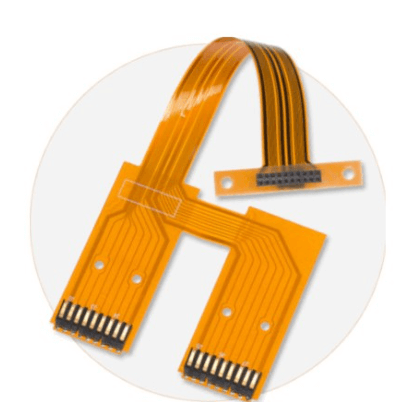The Application of DFM Software in PCB Design
1. Introduction
Printed Circuit Board (PCB) design is a critical phase in electronics manufacturing, where functionality, reliability, and manufacturability must be carefully balanced. As electronic devices become more complex, the need for efficient and error-free PCB production has grown significantly. Design for Manufacturability (DFM) principles ensure that PCB designs are optimized for production, reducing costs, minimizing defects, and improving yield.
DFM software plays a crucial role in this process by automatically analyzing PCB designs against manufacturing constraints, identifying potential issues before they reach production. This article explores the importance of DFM software in PCB design, its key functionalities, benefits, and future trends.
2. What is DFM Software?
DFM software is a specialized tool that evaluates PCB designs based on manufacturing guidelines, ensuring that the design can be efficiently and cost-effectively produced. It checks for issues such as:
- Minimum trace width and spacing violations
- Drill hole size and placement errors
- Solder mask and silkscreen alignment problems
- Component placement and assembly challenges
- Thermal and mechanical stress risks
By detecting these issues early, DFM software helps designers and manufacturers avoid costly revisions and production delays.

3. Key Applications of DFM Software in PCB Design
3.1. Design Rule Checking (DRC)
DFM software integrates with PCB design tools (such as Altium Designer, Cadence Allegro, and KiCad) to perform automated Design Rule Checks (DRC). These checks ensure that the design complies with the manufacturer’s capabilities, such as:
- Trace width and spacing (to prevent short circuits)
- Via and pad sizes (to ensure proper plating and soldering)
- Copper-to-edge clearance (to avoid board breakage)
3.2. Manufacturing Process Optimization
Different PCB fabrication processes (e.g., etching, drilling, plating) have specific limitations. DFM software helps optimize designs for:
- Etching tolerance (avoiding under- or over-etching)
- Drill-to-copper distance (preventing drill breakout)
- Panelization efficiency (maximizing board yield per panel)
3.3. Assembly and Soldering Analysis
DFM software evaluates PCB designs for Surface Mount Technology (SMT) and Through-Hole Technology (THT) assembly, checking:
- Component spacing (to avoid soldering defects like bridging)
- Pad and stencil design (for proper solder paste application)
- Thermal reliefs (to prevent heat dissipation issues during soldering)
3.4. Cost Reduction through Material and Process Optimization
By analyzing design choices, DFM software can suggest cost-saving measures such as:
- Reducing layer count (if the design permits)
- Optimizing board size (to fit more PCBs per panel)
- Avoiding exotic materials (unless absolutely necessary)
4. Benefits of Using DFM Software in PCB Design
4.1. Early Detection of Design Flaws
DFM software identifies potential manufacturing issues before prototyping, reducing the need for multiple design iterations.
4.2. Improved Yield and Reliability
By ensuring that designs meet manufacturing tolerances, DFM software minimizes defects, improving product reliability.
4.3. Faster Time-to-Market
Automated DFM checks speed up the design validation process, allowing faster production ramp-up.
4.4. Cost Savings
Avoiding late-stage design changes and production rework significantly reduces manufacturing costs.
4.5. Better Collaboration Between Design and Manufacturing Teams
DFM software provides a common framework for designers and manufacturers, ensuring alignment on design constraints.
5. Popular DFM Software Tools
Several DFM software solutions are widely used in the PCB industry:
- Valor NPI (Siemens) – A comprehensive DFM analysis tool for PCB fabrication and assembly.
- CAM350 (DownStream Technologies) – Provides DFM checks for PCB fabrication.
- DFM Now (Ansys) – Integrates with CAD tools for real-time manufacturability feedback.
- PCB-DFX (Mentor Graphics) – Focuses on design optimization for fabrication and assembly.

6. Future Trends in DFM for PCB Design
6.1. AI-Driven DFM Analysis
Artificial Intelligence (AI) and Machine Learning (ML) are being integrated into DFM software to predict manufacturing issues more accurately and suggest optimizations.
6.2. Cloud-Based DFM Solutions
Cloud-based DFM tools enable real-time collaboration between global design and manufacturing teams.
6.3. Integration with Industry 4.0
DFM software is increasingly linked with smart manufacturing systems, allowing automated adjustments based on real-time production data.
6.4. Advanced Simulation for High-Speed and HDI PCBs
As high-speed and High-Density Interconnect (HDI) PCBs become more common, DFM software is incorporating advanced signal integrity and thermal simulations.
7. Conclusion
DFM software is an essential tool in modern PCB design, bridging the gap between design intent and manufacturing reality. By automating manufacturability checks, optimizing production processes, and reducing costs, DFM software enhances PCB reliability and accelerates product development. As technology evolves, AI, cloud computing, and smart manufacturing will further enhance DFM capabilities, making it an indispensable part of electronics design.
For PCB designers and manufacturers, adopting DFM software is no longer optional—it is a necessity for staying competitive in an increasingly complex and fast-paced industry.







